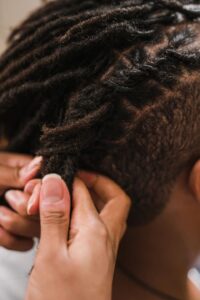Earlier this year, a Black Texas high school student faced in-school suspension when school officials said his locs violated the district’s dress code. 18-year-old Darryl George has been kept away from the classroom for months now after refusing to change his hairstyle, leading to a civil rights lawsuit against the school. Although the school officials argued that his hairstyle went against the dress code as his locs fell below his eyebrows and ear lobes, what happened to Darryl is yet another instance in which a Black person was unfairly disciplined due to their hair, directly impacting access and right to education.
This type of discrimination against Black hair is not unique to schools. According to a Gallup poll, one in four Black workers report discrimination at work, countering 15% of White people who have experienced discrimination in the workplace. Most of the discrimination Black employees face is race-based. Black women especially face the brunt end of the burden when it comes to hair bias. A study found that over 20% of Black women 25-34 have been sent home from work because of their hair. Also, Black women with coily/textured hair are two times as likely to experience microaggressions in the workplace than Black women with straighter hair.
Historically, hairstyles have been used to indicate a person’s marital status, age, religion, wealth, rank, etc. Now, hair can hold a significant place in one’s identity, creative expression, and freedom. Hair is a centerpiece in Black culture – integrated deep into culture and history. Throughout the decades, different hairstyles have been used in activism, like in the 1960s as a symbol during the civil rights movement.
Thanks to the ongoing movement surrounding Black hair, 23 states have passed the CROWN Act – Creating a Respectful and Open World for Natural Hair. This is a law that prohibits race-based hair discrimination, which is the denial of employment and educational opportunities because of hair texture or protective hairstyles including braids, locs, twists, or Bantu knots. The CROWN Act has galvanized support from federal and state legislators in the movement to end hair discrimination nationwide.
In Darryl’s case, his family is referencing the CROWN Act in their litigation. But bias against Black hair still exists today, and we need to continue pushing for change. This is exactly why it’s so important to students like Darryl to continue his fight, and for Black professionals to embrace their hairstyles. As a society, and institutions like schools and workplaces, we need to realize the significance and history of Black hair. Hair is a symbol of who we are as individuals, and we will end the discrimination that comes with it. All people deserve the right to be free from racial discrimination.
